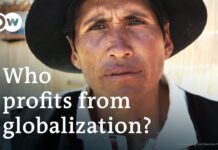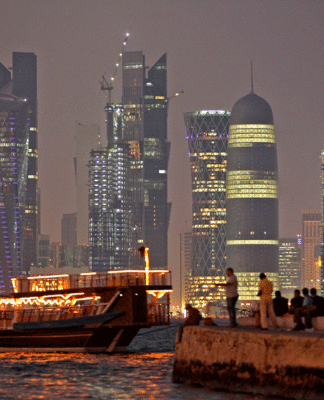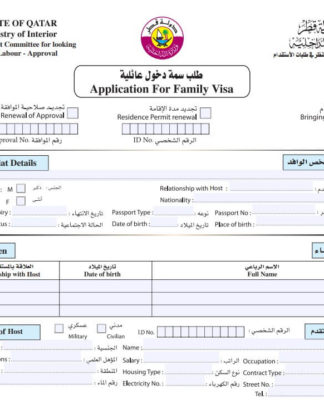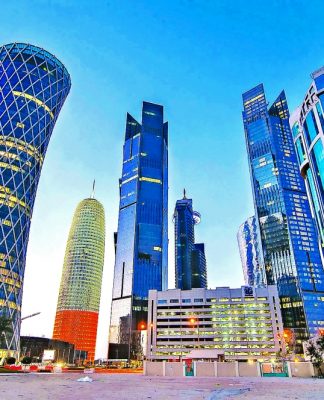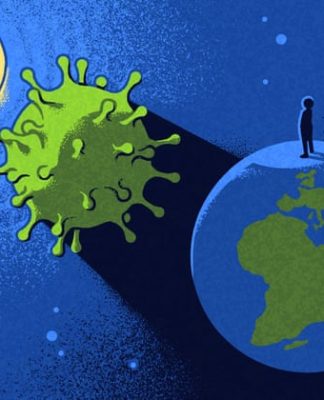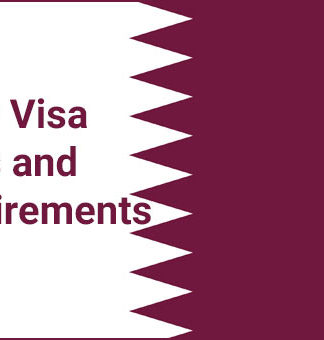GROWTH2023
5 charts showing workforce gender gaps
Apr 21, 2023
A group of workers working in the workplace.
Image: Pexels/cottonbro studio
Victoria Masterson
Senior Writer, Forum Agenda
Share:
THE BIG PICTURE
Explore and monitor how Gender Inequality is affecting economies, industries and global issues
A hand holding a looking glass by a lake
CROWDSOURCE INNOVATION
Get involved with our crowdsourced digital platform to deliver impact at scale
Stay up to date:
GROWTH2023
This article is part of:
The Growth Summit: Jobs and Opportunity for All
Listen to the article
9 min listen
Women’s participation in the workforce is at its lowest level since 2006, according to the World Economic Forum’s Global Gender Gap Report 2022.
Many more women are starting businesses, but they receive a fraction of the investment that goes to businesses owned by men.
Advancing gender equality will be among the topics explored at the World Economic Forum’s Growth Summit 2023 in Geneva between 2-3 May.
Gender gaps are a deepening problem for economies and industry. And one that will be key to discussions at the World Economic Forum’s Growth Summit in Geneva this May.
In its Global Gender Gap Report 2022, the Forum describes gender gaps in the workforce as an “emerging crisis” and identifies a number of areas where urgent action is needed.
The cost-of-living crisis is expected to further depress the earning potential of women, who are already disproportionately affected by factors including employer policies, the availability of care and economic shocks.
According to the International Monetary Fund, if as many women as men were in work or seeking work, it could increase economic output by an average of 35%.
Gender gaps are holding back labour-force recovery
Women have lost significantly more working hours than men since the peak of the COVID-19 pandemic in the second quarter of 2020, Global Gender Gap data shows.
Women’s participation in the workforce – women who are actively working or seeking work – is also at its lowest since the Global Gender Gap Report was first published in 2006.
An analysis of 102 countries in the 2022 report finds only 62.9% of women are participating in the workforce.
Unemployment among women is also higher, at 7.8% in the fourth quarter of 2021 versus 6.5% for men.
A graph showing the change in gender parity for labour-force participation rate, from 2006.
Women’s participation in the workforce is at its lowest level since 2006. Image: World Economic Forum.
Unpaid care work is widening the gender gap
Mothers took on more unpaid care work than fathers during the pandemic, including childcare and homeschooling. As a result, they’ve seen bigger falls than men in working hours and labour-force participation, and greater unemployment over the last two years.
Based on an analysis of 33 countries representing 54% of the global working-age population, the Forum found that women were doing almost three times as much unpaid work as men.
A chart showing unpaid work gender distribution, parents with children under 6 years of age, selected countries.
Women absorb a disproportionate amount of unpaid care work compared to men. Image: World Economic Forum.
Women start-ups lack investment
More women are starting businesses – but they still only attract a tiny percentage of investment. Between 2019 and 2020, there was a 43% jump in businesses founded by women. Some of these were “necessity founders” driven by job scarcity during the pandemic, the Forum says.
There was also a near five-fold rise in women-owned unicorn companies – a start-up valued at more than $1 billion – from 18 in 2020 to 83 in 2021. But women-owned businesses still represent a “minor share” – at 2% in 2021 – of investment in businesses owned by men.
A graph showing business founding rate, by gender.
More women are starting businesses, though they still only receive a fraction of business investment. Image: World Economic Forum.
Gender gaps in leadership are wider in some industries
Women’s share of senior and leadership roles has grown steadily since 2017 and in 2022 reached its highest score yet in the Global Gender Gap Report of 42.7%.
However, some industries are progressing faster than others. Those nearing 50/50 gender parity include non-governmental and membership organizations (47%), education (46%), and personal services and wellbeing (45%). Industries with work still to do include energy (20%), manufacturing (19%) and infrastructure (16%).
The Forum says: “While hiring more women at the entry level is an important component of closing gender gaps in leadership, it is not fully sufficient.”
A bar chart showing women in leadership roles, by industry.
Some industries are progressing faster than others in recruiting women for senior and leadership roles. Image: World Economic Forum.
Wins and losses for the gender gap in politics
Women are making big strides in politics. Between 2006 and 2022, the global average share of women in ministerial positions has nearly doubled from 9.9% to 16.1%, the Forum finds.
In some countries, more women than men are ministers, led by Belgium (57.1%), Nicaragua (58.8%) and Sweden (57.1%).
That said, South Asia and the Middle East, and North Africa have seen a waning share of women as heads of state since the 1970s, while North America has only had one female head of state in the past 50 years.
A bar chart showing women’s share of time in power as heads of state, 1972-2022.
Women are making big advances in politics, but progress has slowed in some regions. Image: World Economic Forum.
World Economic Forum Growth Summit 2023
Accelerating economic equity – including advancing gender equality – is one of three central themes in the World Economic Forum’s Growth Summit 2023: Jobs and Opportunity for All.
The event, which takes place between 2-3 May 2023 at the Forum’s headquarters in Geneva, Switzerland, will bring together business, government, civil society, international organizations and academic leaders to devise a plan for growth focused on people and equitable recovery.
The other two key themes of the Growth Summit 2023 are focused around advancing inclusive and sustainable economic growth, trade and investment, and developing human capital – including investing in education, skills and health.
Have you read?
Davos 2023: This is how to get more women into positions of power
3 ways to reduce gender inequality in the workplace post COVID-19
Spain might introduce a cabinet gender equality law. What would that mean?
DISCOVER
What’s the World Economic Forum doing about the gender gap?
Don’t miss any update on this topic
Create a free account and access your personalized content collection with our latest publications and analyses.
License and Republishing
World Economic Forum articles may be republished in accordance with the Creative Commons Attribution-NonCommercial-NoDerivatives 4.0 International Public License, and in accordance with our Terms of Use.
The views expressed in this article are those of the author alone and not the World Economic Forum.
Related topics:










